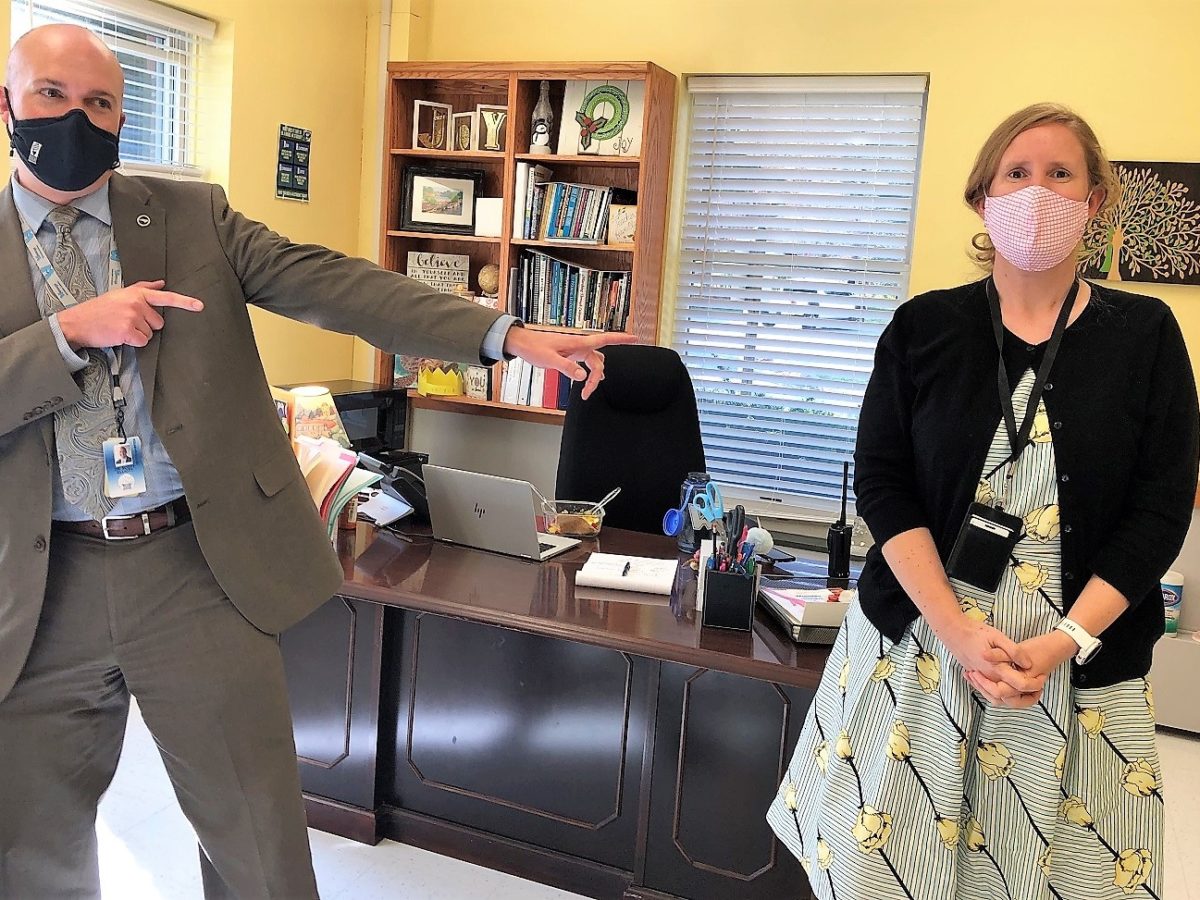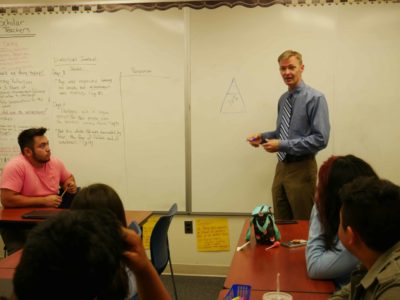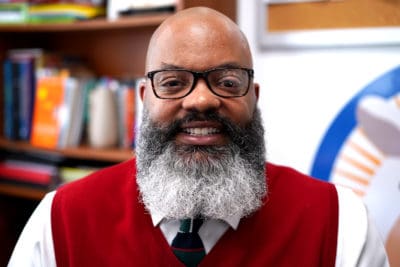
“Do you know Terry Holliday?” Watauga County Schools Superintendent Scott Elliott asks me one day last fall.
Holliday was commissioner of the Department of Education in Kentucky from 2009-2015. Before that he was superintendent in Iredell-Statesville School District and before that he was superintendent in Transylvania County Schools. In 2009, just before he left North Carolina, he was the North Carolina Superintendent of the Year.
Holliday was serving in Transylvania County Schools when he crossed paths with Elliott. Holliday hired him first as an assistant principal then as a principal.
“I don’t know if Holliday developed this process himself,” says Elliott. “I’ve adapted it for my own leadership. But when I was hired as a principal, I was one of five principals who were interviewed. And we were all interviewed in the same room together at the same time.”
Dramatic pause.
Elliott continues the story: “In a media center, in a library, there were five tables set up, each of us were at a different table. There was a committee of representative stakeholders at each table — so you would have a parent, you would have a teacher, you would have a student, and sometimes a community member or a business person.”
It was like speed dating, says Elliott. The candidates would go from table to table to do the interviews in 30 minute increments. For Holliday that in and of itself was a test, he says.
“So I don’t do that,” says Elliott.
What Elliott learned from Holliday’s process is that stakeholder involvement is crucial to buy-in, crucial to the decision-making — and the importance of understanding how other people listen, watch, and think about the candidates.
![]() Sign up for the EdDaily to start each weekday with the top education news.
Sign up for the EdDaily to start each weekday with the top education news.
Here is Elliott’s process when he has a principal vacancy.
First, the school conducts a survey to all students, teachers, and parents asking them the same questions. What are the things that are going well in the school that they want to preserve or continue? What are the challenges they are facing and that the next principal will be responsible for addressing or managing? What are the ideal attributes and experiences of the next principal? What are the needs and strengths of the school, and what else do stakeholders want considered?
Second, the superintendent conducts focus groups with students, teachers, and parents asking those same questions. Elliott takes a central office person with him who collects notes while he is having the conversations.
From the survey and the focus groups, Elliott develops a leadership profile, unique to the school. The leadership profile is used to screen the applicant pool.
“I look for people with the right experiences, attributes for the particular school,” Elliott emphasizes. He selects four or five of the candidates to come in for interviews — separately, not all together.
Each candidate is given a set of data plus links to other resources with research about the school.
Each candidate starts by giving a presentation to one group of stakeholders. Then they go to another group for an interview. The next group conducts a more informal conversation to get know the candidate. Then, each candidate has a one-on-one interview with Elliott while walking around the school.
Usually about 30-40 people end up participating in the interview and Elliott asks each person to fill out a rating form — not a ranking form, he stresses — but rating each candidate on their suitability for the job and the school and the community.
“When you have about 30-plus people giving you feedback on each candidate, usually some consensus and trends emerge,” says Elliott.
Sometimes there’s not a suitable candidate, and Elliott restarts the process.
More often, with the input from the stakeholders, Elliott selects two or three candidates as finalists.
The finalists come back in and meet with Elliott and couple of other leaders. Whomever Elliott invites to sit in depends on the needs of the school. It might be the chief academic officer, it might be another school administrator, it might be a teacher leader, it might be the teacher of the year, or maybe a leader in the community.
Clarity, Elliott says, usually emerges in the final interviews.
The thoroughness of the process allows Elliott to check his thinking. He knows what he sees, but he knows there is a lot he doesn’t see too. He also knows he needs a way to move beyond what people want him to know.
“Where you sit as superintendent,” says Elliott, and using his hands he demonstrates, “you have this much information, and you really need this much information to make the right decision.”
It’s about staying curious, wondering, and wanting to know more.
This process, Elliott says, helps him discern what is real and true. In a principal search, that means getting to know who the candidates really are and assessing whether they are a good fit for the school they will lead.
Do you have a process you want others to know about in hiring teachers or principals? Send it my way.
Recommended reading



